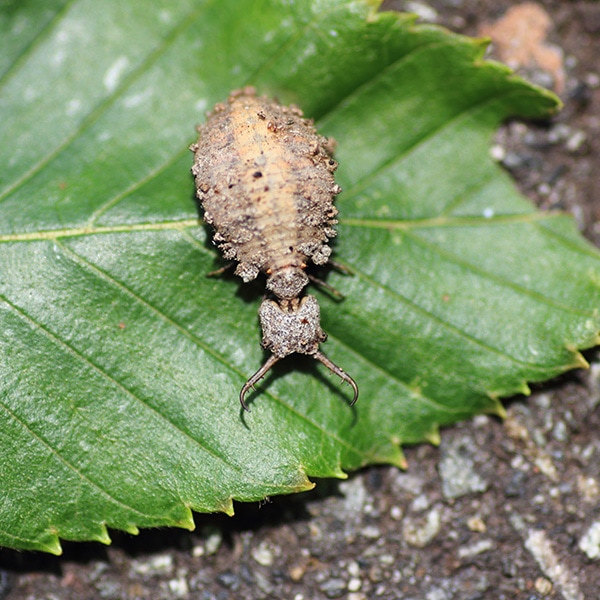How Did These 7 Bugs Get Their Names?
It might seem obvious how some bugs got their names -- like bed bugs -- but many other critters earned them through reputation and folklore. See the list!

Insects are fascinating to those of us who take a moment to observe them, so it’s no surprise that many of our creeping, crawling, and flying neighbors have descriptive and in most cases, very fitting names.
Some bug names represent their behavior or the time of the season when they emerge; others are named through folklore and legends that have been passed down through the centuries. Whether based on scientific fact or fanciful speculation, it makes these insects even more interesting! Here’s a list of the origin of 7 bug names:
1. Earwigs
Even though earwigs prefer dark, snug places, they really don’t want to be in your ear canal burrowing to your brain to lay eggs, as the unnerving legend states. Their common name is possibly the oldest of any insect in the English language, dating as far back as the 11th Century. “Earwig” derives from the Old English ear wicga, which, when roughly translated, means “ear insect” or “ear wiggler” (wicga meaning ‘wiggle”).
Their wicked-looking pincers, called cerci, also adds to their menacing appearance, although they are more often used on prey rather than people.
Earwigs hide underneath rocks and in garden debris during the day and come out at night to eat a wide-variety of decaying organic matter, aphids, insect eggs, and some plants. At reasonable numbers, they’re useful to help clean up on the ground level. But they can easily slip into the pest category, and can turn picking an ear of sweet corn into something out of a horror movie. As you peel back the husk, the earwigs spill out by the dozen. And when the weather cools off at the end of the summer, they often come inside. There’s not many things less appealing than finding an earwig on your toothbrush!
2. Stinkbugs
If you squish a stinkbug, you’ll soon discover how they earned their name. Although there are over 200 varieties of stinkbugs in the U.S. and Canada, the newest nuisance is the brown marmorated stinkbug that arrived from Asia in the 1990s, according to the USDA. Besides causing excessive damage to crops and fruit trees, they are a nuisance to homeowners when they work their way indoors in the spring and fall.
See our home remedies for how to get rid of these stinky bugs!
3. Ladybugs
Ladybugs are one of the most well-known bugs to have in the garden since their larvae (not the adult beetle) consume aphids and other soft-bodied insects at an impressive rate.
Ladybugs, have long been associated with the Virgin Mary. Popular legend tells of swarms of insects that descended upon the fields in Europe during the Middle Ages destroying the precious crops. The people prayed to the Virgin Mary for help, and supposedly she sent these red and black beetles to consume the invaders. Since then, they’ve been called “Our Lady’s Bugs,” and ultimately “Ladybugs.”
Ladybugs are also considered good luck throughout all cultures. If one lands on you, you will have good luck. Others say to count the spots to determine how many months of good luck are on the horizon, or even have many children you might have.
Don’t Confuse Ladybugs with Asian Lady Beetles!
While ladybugs are valuable in the garden, the Asian lady beetle, Harmonia axyridis, is not. One distinction from our native beetle is the ‘M’ shaped marking behind the head. Their coloration can range from red to orange or even slightly yellowish.
4. Doodlebugs
Yes, there really are doodlebugs. They earned their name because they create meandering paths in the sand as they search for a place to dig their lethal sand pits used to trap their prey.
While “doodlebug” sounds cute and cuddly, a closer look at these alien-looking creatures might send a chill down your spine. Their prominent mandibles have sharp, hollow projectiles used to poison their prey, inject digestive enzymes, then suck out the juices before they toss the carcass aside. As part of their lifecycle, doodlebugs form a cocoon and emerge as somewhat delicate, weak-flying adult resembling a damsel fly. Being nocturnal, they are not often seen, but they need to feed on pollen and nectar in order to lay eggs and continue the process. As with any beneficial insect, plant flowers to supply a food source to keep them in your area.
5. Dragonflies
According to the book, A Dazzle of Dragonflies, by Forrest Lee and James Lasswell, Romanian tradition says that when God sent St. George and an army of angels to put the Devil in his place, St. George’s horse was possessed by the devil and turned into a flying insect. Not surprisingly the Romanian term for dragonfly is calul dracului, meaning “devil’s horse.”
Swedish tradition also associates these winged insects with the devil, as they are reported to weigh the souls of people.
Of course, there is no truth to these myths, and we actually want dragonflies in our garden. To create an excellent habit for them, don’t eliminate every pest you see — dragonflies eat heartily and need insects to thrive. They also benefit from having a water source to complete their life cycle. With a little luck, you can have the devil’s horse wage war on the pests for you.
6. June Bugs
Dozens of different species of Phyllophaga wear the June bug moniker since they emerge from the soil during the first month of summer. You might also know them as “May beetles” or “June beetles.” The adults emerge and congregate on screens and near lights in mid- to late-May and June to mate before laying eggs and dying. They’re known as “chafers” which means they eat vegetation, namely leaves. That’s why their scientific name is Phyllophaga — the Greek word for “leaf eater.” These often brownish beetles are nearly an inch long, and make a racket when they bang themselves against screens trying to reach the light source. Thankfully, they don’t bite, although they’re bound to send you screaming if one lands in your hair! Find out why June Bugs are attracted to light.
7. Love Bugs
Earning their nickname because their shameless attachment during their mating period, there undoubtedly is no love for love bugs that often end up the windshield or hood of vehicles during their brief courtship. They are usually seen in May and September, from Texas to Florida, and as far north as North Carolina. The adults are joined in flight during this mating period, and while they don’t bite or sting, the dense swarms splatter windshields, and can even clog radiator grills causing the vehicle to overheat.
The popular rumor is in the 1950s love bugs, which are actually flies, were accidentally released by the University of Florida in an experiment gone awry. In reality, they migrated from Central America long before then.
While there is no way to avoid them, particularly when driving at highway speeds, it’s important to wash your vehicle as soon as possible to avoid ruining the paint. Some southern residents do install bug shields to help reduce the impact on the paint.

Amy Grisak
Amy Grisak is a freelance writer, blogger, and photographer specializing in gardening, local food, and stories about her home state of Montana. She enjoys sharing her experiences with self-reliant living and outdoor recreation. Her article on the "hugelkultur" gardening technique appears in the 2021 Farmers' Almanac. You can follow her topics on her site, AmyGrisak.com.













I found a earwig in my backyard
I thought the green large beetles were June bugs. Looking them up.
GREAT ARTICLE! THANK YOU!
How about praying mantis
I live in Maryland and the other day I killed a love bug. Didn’t know what it was at the time. I had never seen one.
What about cockroaches?
In Tennessee, June bugs are always a deep green, not to be confused with the Japanese Beetle which is smaller and shinier. In northern middle Tennessee, they usually come out in early July. I have heard many stories of how people would tie a string around one of their legs and fly them like a kite.
What about the darning needle and the walking stick bugs? Originally born in NY, I lived in the country. I remember my mom and dad telling me what the were, and we did not kill them. Just curious.
Hi Marti, Yes, we could do a whole series! There are so many interesting bugs out there.
What about the darning needle and the walking stick bugs? Originally born in NY, I lived in the country. I remember my mom and dad telling me what the were, and we did not kill them. Just curious.
We have lovebugs here in West Virginia. Not in swarms, but I’ve seen them here